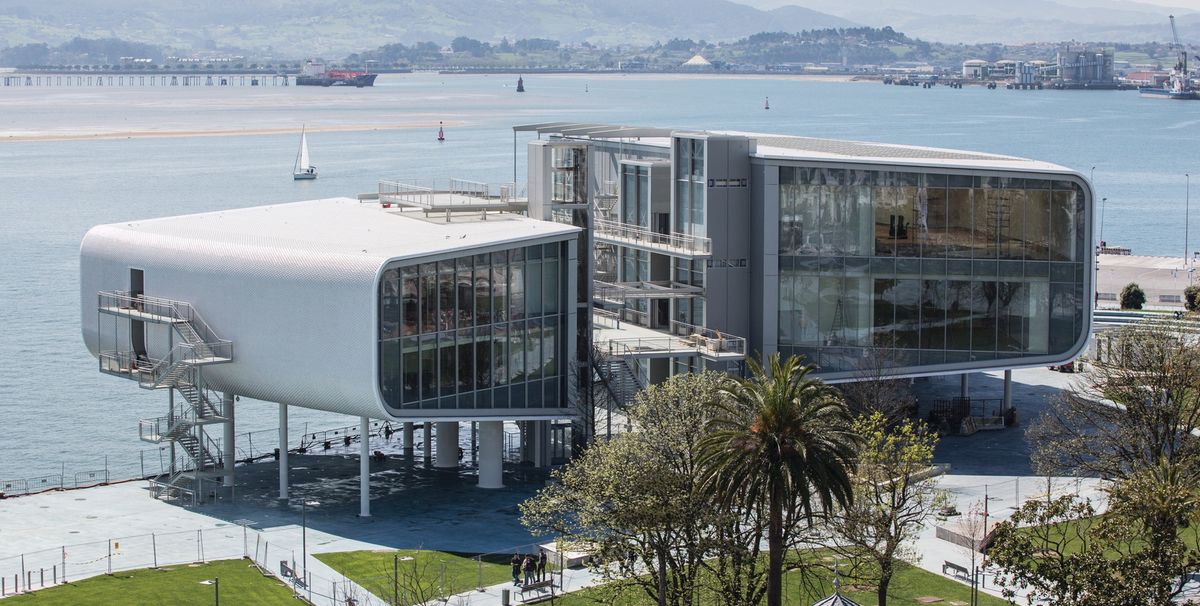Almost 20 years since Frank Gehry’s $100m titanium-clad Guggenheim Bilbao opened, another city on Spain’s north coast is getting a major contemporary art centre designed by an internationally acclaimed “starchitect”. The Centro Botín, Renzo Piano’s first big commission in the country, opens in Santander on 23 June. But comparisons with the museum that became a model for culture-driven regeneration schemes worldwide are too simplistic, say Piano and the president of the Fundación Botín’s visual arts committee, Vicente Todolí.
The foundation launched in the 1960s by Santander’s banking dynasty appointed Todolí, the Spanish curator and former director of London’s Tate Modern, around the time it unveiled Piano’s initial plans for the centre six years ago. “The idea was not to create an icon,” Todolí says. “The building is not trying to show off or give the impression that Santander is more than it is.” (The city’s population of 170,000 is around half that of Bilbao.)
Piano described the design in strikingly similar terms after the public consultation process in a 2011 interview with the architecture critic Richard Ingersoll. The building overlooking the bay of Santander was to prioritise “luminosity and lightness” and be as invisible as possible from the city centre. “I suppose our strategy was the opposite of the Guggenheim,” Piano said. “How many Bilbao effects can you have after all?”

Covered in thousands of light-diffusing ceramic tiles, the 10,300 sq. m structure is split into two “lobes” housing 2,500 sq. m of galleries and a 300-seat auditorium respectively. (This compares to around 11,000 sq. m of exhibition space across 19 galleries at the Guggenheim Bilbao.) To preserve views of the waterfront, Piano has raised the building on four-metre pillars level with the tree trunks in the surrounding Pereda Gardens. By re-routing a main road through an underground tunnel, the project has doubled the green space to almost ten acres.
The park hosts Cristina Iglesias’s permanent water installation in five pieces, Desde lo subterráneo, while an open-air amphitheatre will screen films and activities within the centre. Free admission to these external spaces will encourage visitors to “move seamlessly between outdoors and indoors”, says the centre’s executive director Fátima Sánchez. The €8 ticket price for exhibitions will be waived for residents of Cantabria.
The aim, Sánchez says, is to create an “art centre with a social mission” that reflects the foundation’s 50-year record of philanthropy in the region and beyond. The auditorium and other rooms in the building’s eastern half will present concerts, festivals and activities in music, dance and cookery. Educational programmes based on the foundation’s research partnership with Yale University will explore the links between creativity and emotional intelligence.
Nevertheless, “it is important to place the Botín Centre on the contemporary art scene on a global level,” Sánchez says. Todolí and Udo Kittelmann, a fellow committee member and head of Berlin’s Nationalgalerie, are co-organising the opening exhibition dedicated to Carsten Höller (Y, until 10 September). The 250-strong collection holds works by established names including Mona Hatoum, Miroslaw Balka and Tacita Dean, who have mentored young artists for the foundation’s workshops initiative.
A third programming strand focuses on drawings, following catalogues raisonnés of the Spanish masters published by the foundation since 2006. A show of 80 Goya drawings drawn from the collection of Madrid’s Museo del Prado (Agility and Audacity, until 24 September) anticipates the completion of the project in 2019.
But unlike flashier art museums backed by private foundations, the centre’s primary mission is to serve the local community. The foundation declined to say how many visitors it hopes to attract. Forecasts aside, Todolí says: “You don’t need to be a big city to have a very good and appropriate cultural infrastructure.”
In Spain, which is still trying to recover from the recession, the anti-Bilbao style of the Centro Botín speaks to a wider context of “discomfort with grand [cultural] building projects” in a post-crisis world, says Bruce Altshuler, the director of museum studies at New York University. “Culture is not saving cities any more.”


